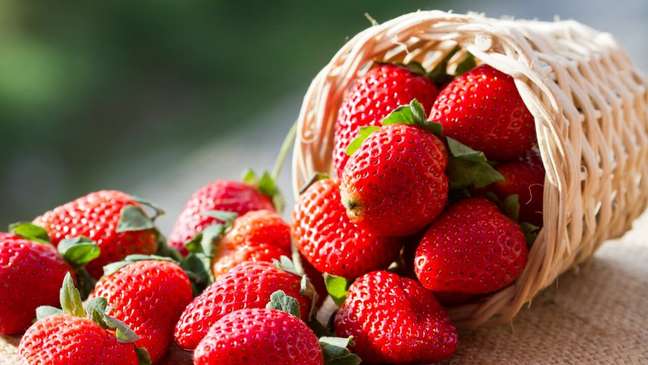Find out what to include in your diet to improve or prevent inflammation in the body

After all, what is an anti-inflammatory diet? It is a dietary re-education that aims to reduce chronic inflammation, linked to cardiovascular disease, hypertension, anxiety, depression, type 2 diabetes, some types of cancer, depression and obesity.
It is not a specific diet, but a style of nutrition. In other words, essentially, this diet follows the Mediterranean style, with a focus on healthy fats (olive oil, walnuts, almonds, avocados and fish), nutrient-rich foods (fruits, vegetables and legumes), low carbohydrates glycemic index (cereals and whole grains), fresh herbs and spices.
But it is also necessary to remove some foods that are not part of the menu. For example: sugary soft drinks and juices, refined carbohydrates (bread and white pasta), desserts (biscuits, sweets, cakes and ice cream), processed meats (turkey breast, mortadella and sausages), processed snacks (filled biscuits and snacks) and beverages alcoholic.
Therefore, according to nutritionist Adriana Stavro, to reduce or prevent inflammation, it is important to maintain a diet based on foods rich in nutrients and containing antioxidants. “An anti-inflammatory diet should provide a healthy balance of proteins, carbohydrates, fats, vitamins, minerals and fiber, prioritizing foods with anti-inflammatory properties,” she explains.
13 foods that cannot be missing from the anti-inflammatory diet
1. Purple grapes
Grapes contain resveratrol, a plant compound with anti-inflammatory and antioxidant properties. Additionally, they can reduce the risk of heart disease, diabetes, obesity, Alzheimer’s, and eye disease.
2. Red fruits
Berries such as blueberries, strawberries, raspberries or blackberries contain several essential micronutrients such as fiber, polyphenols and antioxidants (anthocyanins), compounds that fight inflammation. Not only do they reduce existing inflammation, they also prepare cells to better respond to any future inflammation.
3. Broccoli
Broccoli and other cruciferous vegetables such as cauliflower and Brussels sprouts are rich in vitamin K, C, potassium, magnesium, fiber and sulforaphane. Therefore, according to the nutritionist, the potential protective role of cruciferous plants and the active components present in these vegetables has been extensively studied. And the results showed that this class of vegetables can even delay cancer development.
4. Omega-3
Salmon and other fatty fish are rich in omega-3 (W3) fatty acids. According to Stavro, W3’s anti-inflammatory properties have been described for its role in the prevention and treatment of conditions such as coronary heart disease, diabetes, inflammatory bowel disease, Alzheimer’s, bipolar disorder, schizophrenia, and cystic fibrosis. W3 is also beneficial for autoimmune diseases such as lupus, rheumatoid arthritis, type 1 diabetes, ulcerative colitis, psoriasis, and multiple sclerosis.
Varying the menu is important in order not to get sick.
5. Turmeric
Turmeric, a long turmeric rhizome, is a tasty yellow-orange spice. The components of turmeric are called curcuminoids. And most importantly, curcumin. According to the expert, it has been used for centuries in alternative medicine, as it is non-toxic and has a variety of therapeutic properties, including anti-inflammatory, antioxidant, antimicrobial, hepatoprotective, immunostimulating, antiseptic, analgesic and anticancer properties.
6. Pumpkin seeds
Pumpkin seeds contain polyunsaturated fatty acids, potassium, vitamin B2 (riboflavin), folate, vitamin E and carotenoids, which are antioxidants, vitamins and minerals essential for the immune system. They are great as snacks, but can also be sprinkled on salads or soups.
7. Green leaves
Spinach, kale, chard and rocket are rich in antioxidants, vitamins and nutrients, including folic acid, fiber, vitamins A, C, E and K. It is worth remembering that increased consumption of fruits and vegetables has been widely recommended as key component of a healthy diet to reduce the risk of major chronic diseases such as cancer and cardiovascular disease (CVD), the leading causes of death worldwide.
8. Avocado
Avocados are sources of healthy (monounsaturated) fats, which help reduce cholesterol and joint inflammation. Avocados also contain vitamins K, C and E, manganese, selenium and zinc. The various nutrients in the fruit have also been shown to be useful in the prevention of neurodegenerative diseases such as Alzheimer’s and Parkinson’s.
Every detail counts
9. Green tea
Green tea is rich in catechins. According to Stavro, research suggests that catechins are anti-inflammatory compounds that prevent the formation of free radicals, inhibit the formation of cancer cells, promote the growth of beneficial bacteria in the gut, and reduce the risk of Alzheimer’s.
10. Tomatoes
Tomatoes are a source of lycopene. Lycopene is the pigment that gives color to red and pink fruits such as tomato, watermelon and strawberry. It is a nutrient with antioxidant properties associated with heart health benefits and protection against sunburn and some cancers.
11. Whole grains
These grains contain more fiber, protein, selenium, potassium and magnesium than refined grains. They also have a lower glycemic index, which minimizes the inflammatory effects that are seen with extreme and constant glycemic fluctuations. Additionally, a diet rich in whole grains was associated with better weight management.
12. Extra virgin olive oil
According to the nutritionist, olive oil contains about 36 phenolic compounds and it is this phenolic fraction that is responsible for the anti-inflammatory, antioxidant and antimicrobial benefits. The main anti-inflammatory effects of olive oil are mediated by antioxidants. The highlight is “oleocanthal, which has been shown to act similarly to ibuprofen, an anti-inflammatory drug,” says Stavro.
superfood
13. Chia
Chia seeds are known as a superfood. They offer all nine essential amino acids and are therefore a high quality plant protein. More than 80% of the carbohydrate content of the seeds is in the form of fiber. The fiber is mainly of the soluble type, responsible for the sticky consistency of the moistened seeds.
This fiber can be fermented in the gut, promoting the formation of short-chain fatty acids (SCFA) and improving colon health. Another important feature of chia is its high omega-3 content. In fact, chia is the best-known plant source of W-3, even better than flaxseed.
The minerals that stand out most are: manganese, essential for metabolism, growth and development; phosphorus, which contributes to bone health and tissue maintenance; Copper, which is important for heart health selenium, an important antioxidant and calcium, essential for bones, muscles and nerves.
Source: Adriana Stavro, Master nutritionist at the São Camilo University Center.
Source: Terra
Benjamin Smith is a fashion journalist and author at Gossipify, known for his coverage of the latest fashion trends and industry insights. He writes about clothing, shoes, accessories, and runway shows, providing in-depth analysis and unique perspectives. He’s respected for his ability to spot emerging designers and trends, and for providing practical fashion advice to readers.




![Everything starts here: What awaits you on October 3, 2025 on Friday 1277 Episode [SPOILERS] Everything starts here: What awaits you on October 3, 2025 on Friday 1277 Episode [SPOILERS]](https://fr.web.img3.acsta.net/img/39/7b/397bcaa8db274531d6f5fbde2cbe58b8.jpg)
